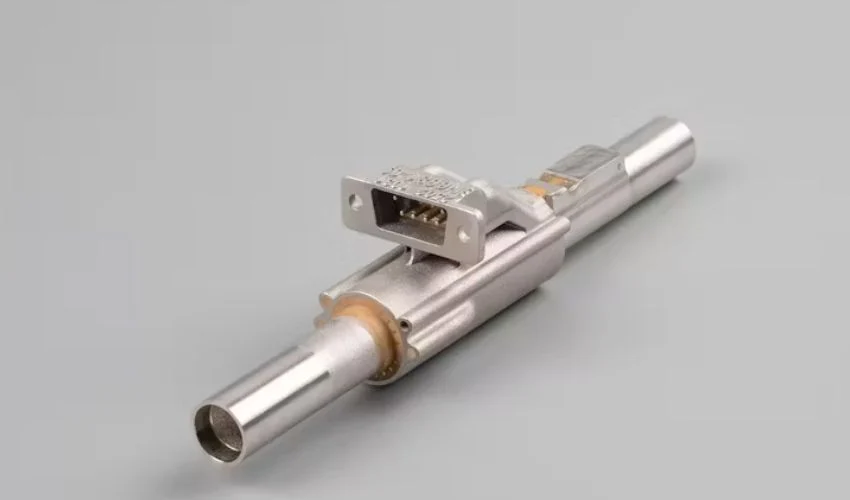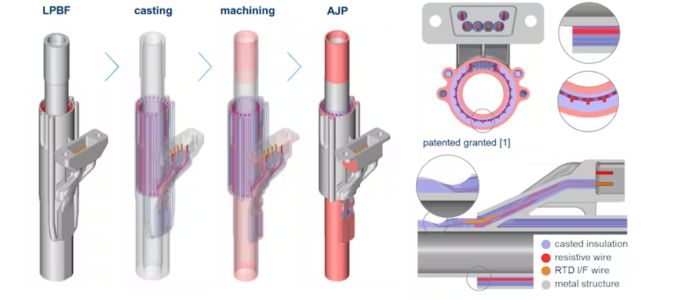
Most heat control systems used today are heavy, bulky and require many connection cables. The EU project ahead (Advanced Heat Exchange Devices) aims to optimize these systems, and now a promising result has been presented: a 3D-printed pipe segment that can heat the liquid in mechanically pumped grinding (MPL) and measure its temperature .
The pipe segment was developed by the Swiss Technology Innovation Center CSEM in cooperation with the Lisi Aerospace Additive Manufacturing and Thales Alenia Space France. What the 3D printed pipe segment is remarkable is that it combines heating elements and temperature sensors. This means that it could be used in satellite heat control systems in the future because they do not have to overheat in the sun or freeze outside of its lite. In addition, the segment could also play an important role outside of satellite technology in IoT applications or Industry 4.0, in which heating and monitoring solutions improve the reliability of thermal management processes.

The segment weighs 115 grams, is 150 millimeters long and can work at temperatures in the range from -65 ° C to +85 ° C and at a pressure of up to 48 bar (photo credits: CSEM).
But how was the 3D printed pipe segment generated and how is it used in MPLs? Mechanically pumped loops circulate liquids like ammonia to transport heat from hot to cold areas. The 3D printed pipe segment is therefore designed in such a way that the coolant levied and the temperature measures to control the thermal regulation.
The 3D printed pipe was made of 316l stainless steel and manufactured using laser powder fusion. The 3D print reduced the need to glue or wire separate components, and simplifies the MPL installation by reducing risks without wiring process. Hervé Saudan, project manager at CSEM, also emphasizes that the design ensures even heat transfer, since the heating wires are optimally arranged around the tube and remove errors such as delamination or cable separation.
However, the manufacturing process also made considerable challenges, such as: For this purpose, sacrificial bridges were developed – a design solution that ensures electrical insulation between the wires and the pipe structure and can be easily removed during healing.
In addition, the laser powder fusion had to be very precise due to the small gaps between structure and wires. This means that the gaps could not become too narrow, as this leads to a large material fusion and at the same time could not be too great, as this influences the heat transfer of wires on the inside of the tube. The construction and manufacturing processes have now been protected by a patent.
https://www.youtube.com/watch?v=cdsule4neym
For future space applications, the structure of such pipe segments could also be made of aluminum in order to further reduce weight, but other materials such as glass ceramics could also be used as insulating material or resin. With the advantage of integrated cables, the 3D-printed pipe segments pave the way for further applications in the heating area. Hervé Saudan confirmed: “We have several ongoing projects, but at this point I fear that they will remain confidential. “” Find out more about the pipe segment here.
What do you think of the production of the 3D printed pipe segment? Let us in a comment below or on our LinkedIn, Facebook and knowledge Twitter Pages! Don't forget to register for our free weekly newsletter, the latest 3D printing messages directly to your inbox! You can also find all of our videos on our YouTube channel.
*Cover photo -Credits: CSEM
